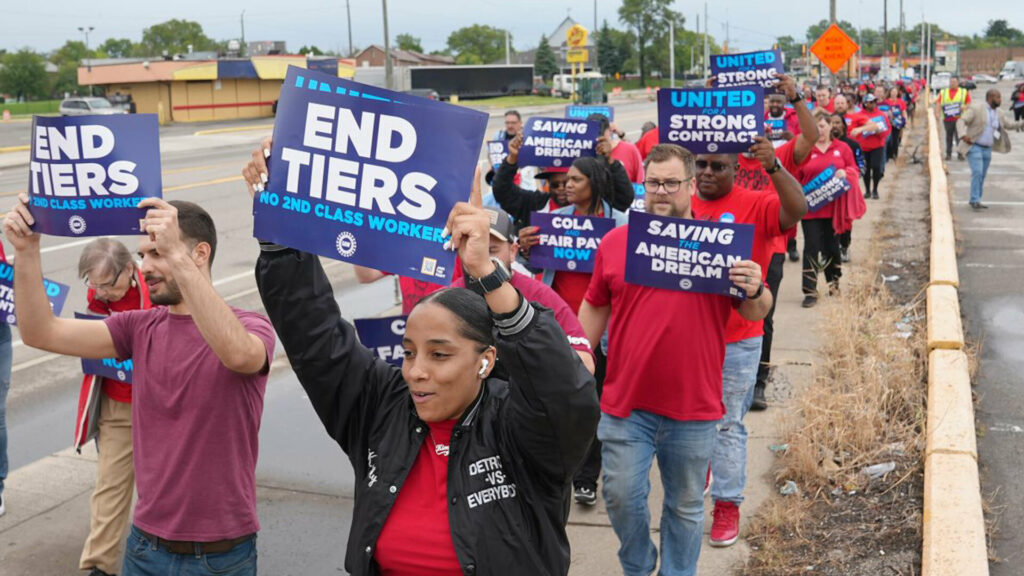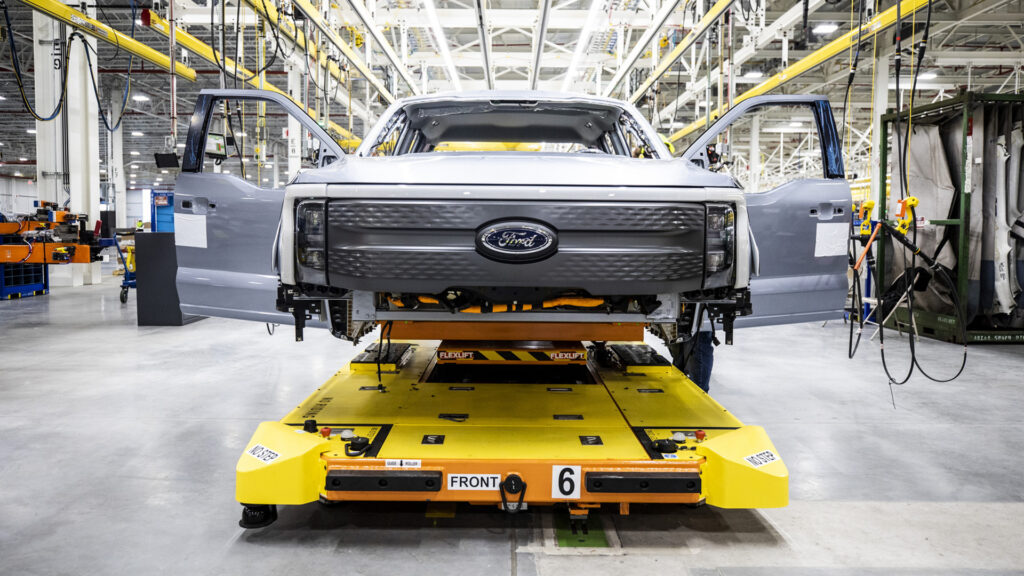Ford has revealed that the United Auto Workers (UAW) strike against it cost the firm cost it $1.3 billion and slashed $1.2 billion in third-quarter net income.
The union’s strike on Ford stretched on for 41 days and only ended on Wednesday evening when it struck a tentative agreement with the car manufacturer. According to Ford chief financial officer John Lawler, the strike canceled production of 80,000 vehicles and cost it roughly $100 million in the third quarter. As the strike stretched into October, it cost it a further $1.2 billion, promoting Ford to withdraw its full-year guidance while waiting on UAW members to vote on the agreement.
While speaking with analysts during the release of its third-quarter earnings, Ford said the deal with the UAW will increase labor costs by $850 to $900 for each vehicle it builds and reduce margins by 0.6 or 0.7%. While executive chair Bill Ford says the company can “barely” afford its new deal with the UAW, Lawler says Ford will remain profitable.
Read: Ford And UAW Reach Tentative Agreement To End Strike

“We’re going to have to find efficiency and productivity throughout the system and throughout the company to help mitigate the impacts of the higher labor costs,” he told Auto News. “Interestingly, we’re in a period of time where we’re seeing inflation. When you’re in a period of inflation, you have to pay your people because it puts a hardship on them, and then you as a company have to go operate more efficiently, increase your productivity, and eliminate waste.”
Ford’s revenue rose to $44 billion in the third quarter, an 11% increase from the third quarter of last year. The company finished the quarter with more than $29 billion in cash and $51 billion in liquidity while also reporting increases in U.S. sales of its combustion, electric, and hybrid vehicles.
Many details about Ford’s new deal with the UAW have not been publicized. However, it is understood to include 25% base wage increases through April 2028 and a 68% increase in the starting wage to more than $28 an hour. The new deal also includes cost-of-living allowances, a three-year wage progression system, and more generous retirement benefits.




